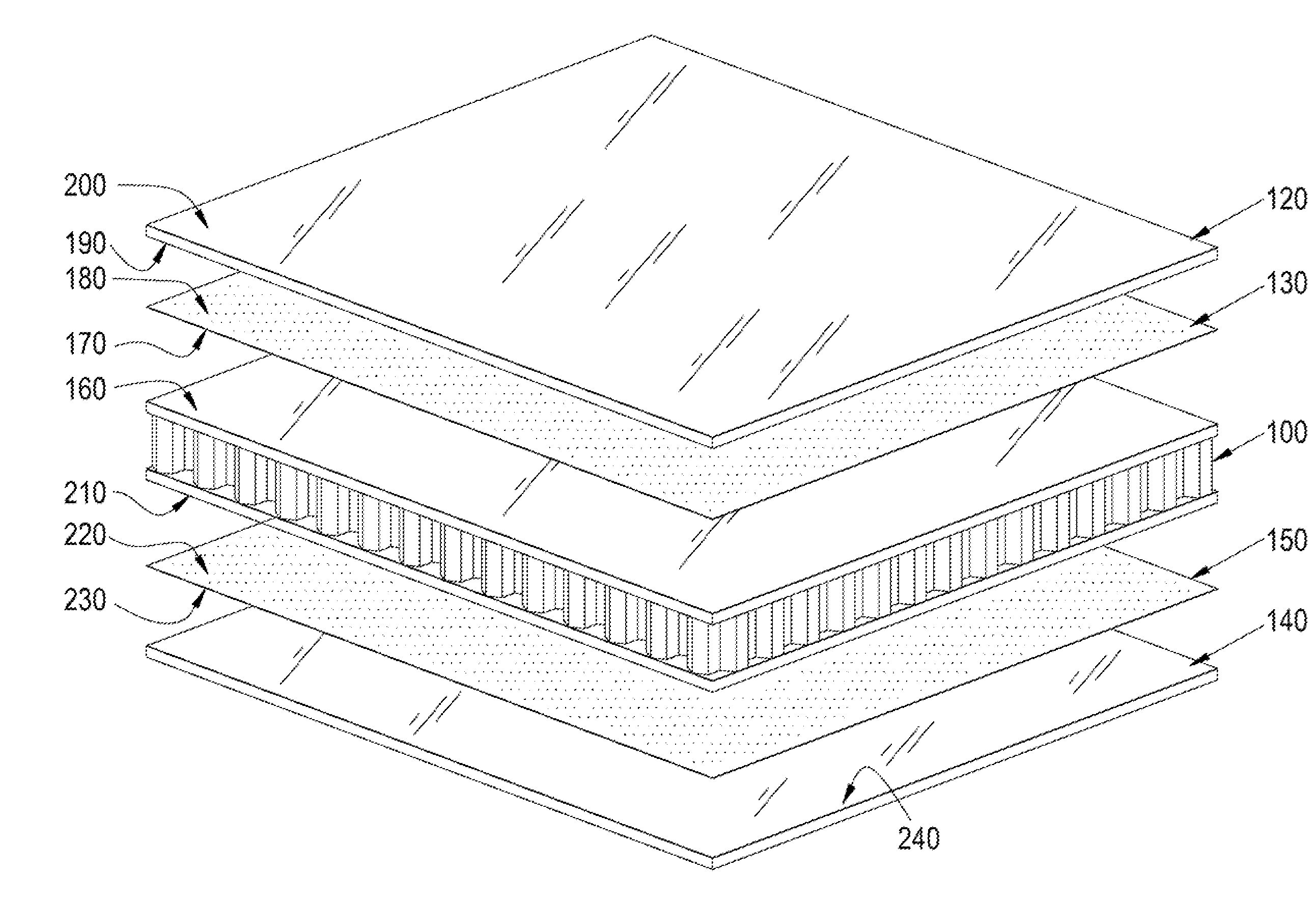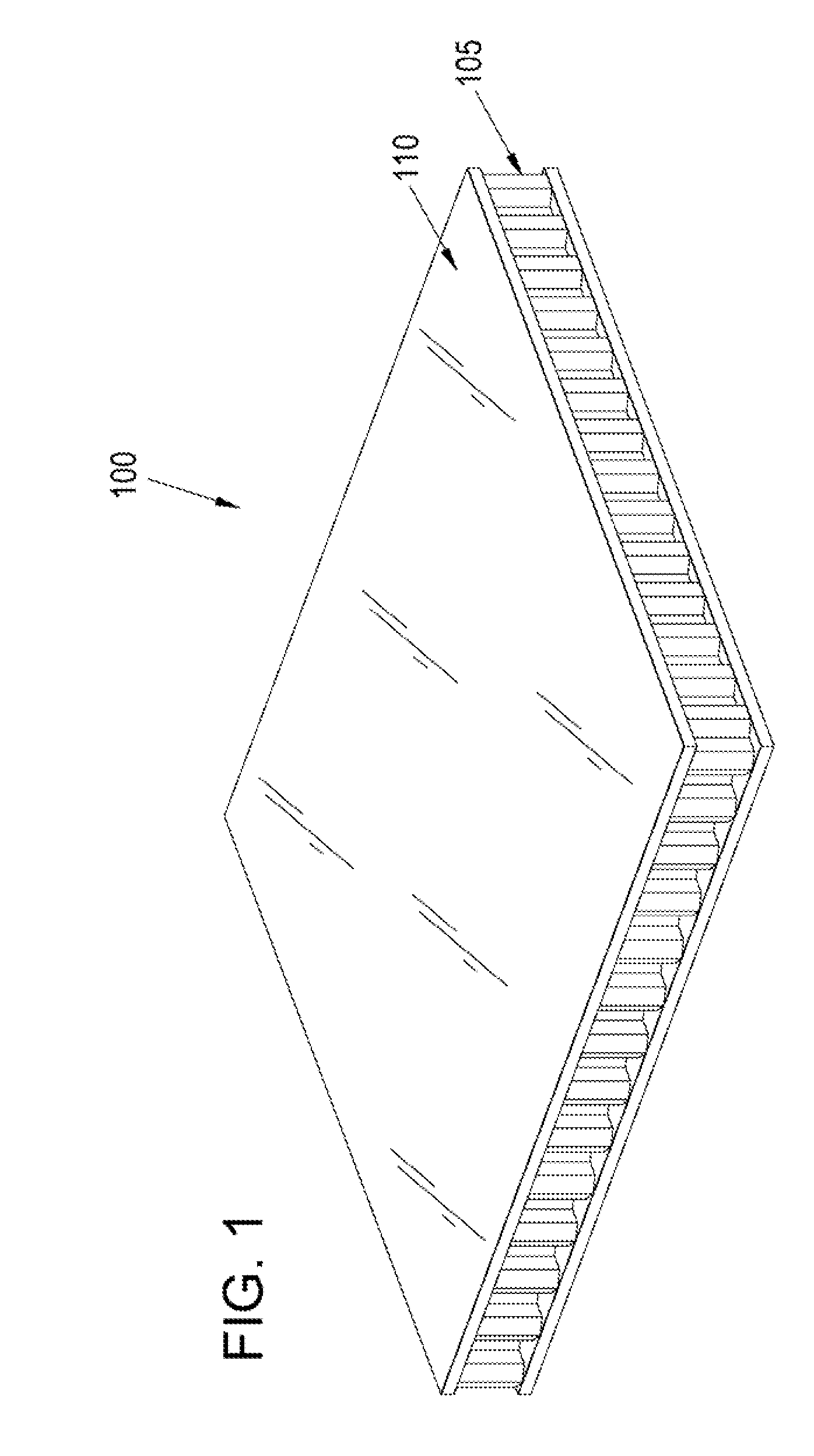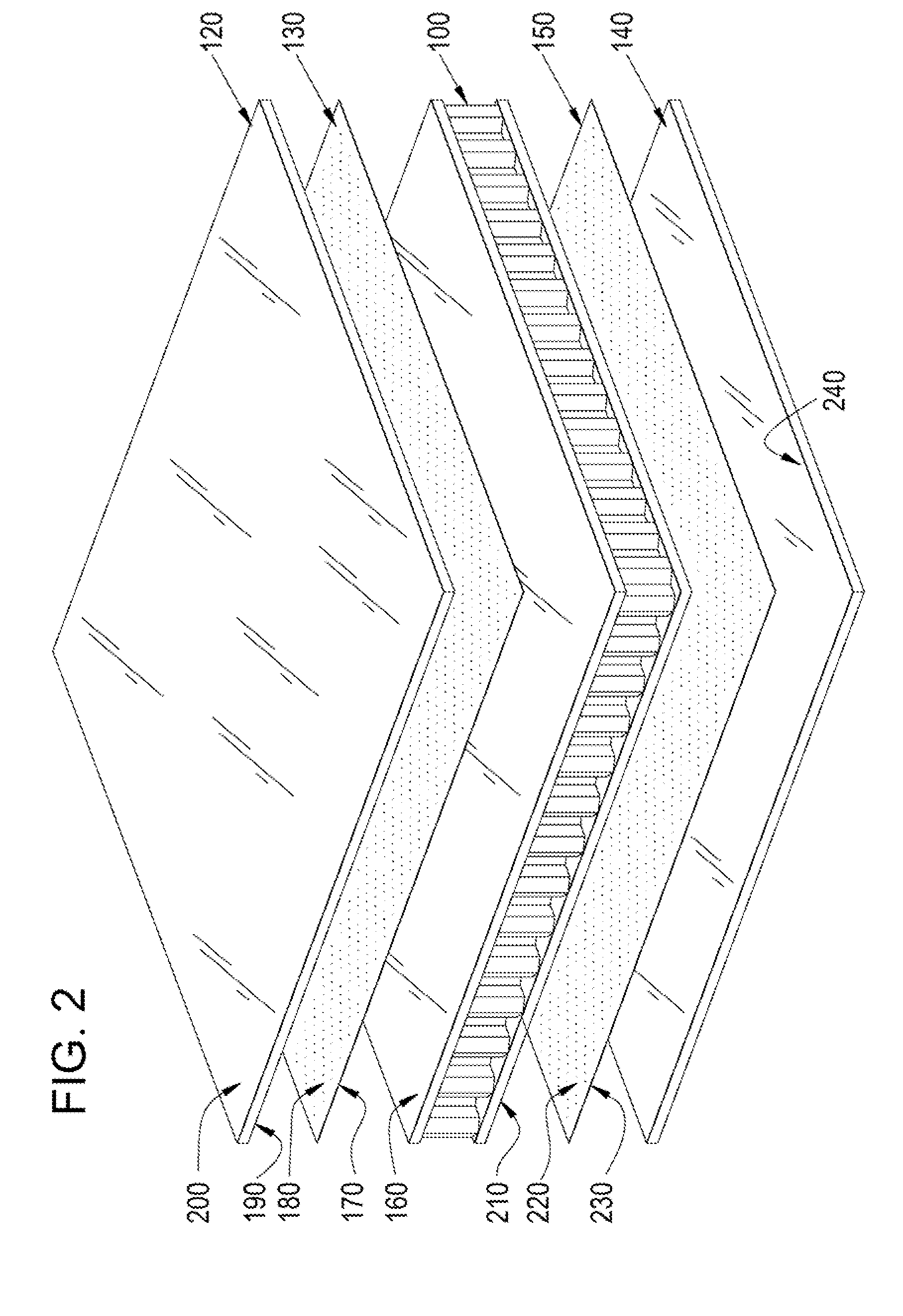Specular coatings for composite structures
a composite structure and coating technology, applied in the direction of moulds, synthetic resin layered products, packaging, etc., can solve the problems of aluminum panels that were previously successful with high thermal expansion, low mass and achieve the effect of low mass, low thermal expansion, and low thermal expansion
- Summary
- Abstract
- Description
- Claims
- Application Information
AI Technical Summary
Benefits of technology
Problems solved by technology
Method used
Image
Examples
Embodiment Construction
[0028]Reference will now be made in detail to the exemplary embodiments of the invention, examples of which are illustrated in the accompanying drawings.
[0029]The subject technology may be applied to a number of applications, including solar reflectors, high frequency satellite communications, RF antennas, and any lightweight structure requiring a thermally stable highly reflective coating. Other potential applications further may include parabolic-shaped satellite concentrator dishes requiring high quality reflective surfaces, inflatable optics and free space optics for high quality coating technology in harsh environments and / or lightweight applications.
[0030]The invention addresses problems with the aforementioned techniques for bonding dissimilar materials that will be subjected to large temperature and / or pressure variations, including but not limited to those encountered in the space environment. In one embodiment, the method disclosed herein may create a thermally and mechani...
PUM
| Property | Measurement | Unit |
|---|---|---|
| temperature | aaaaa | aaaaa |
| temperature | aaaaa | aaaaa |
| thickness | aaaaa | aaaaa |
Abstract
Description
Claims
Application Information
 Login to View More
Login to View More - R&D
- Intellectual Property
- Life Sciences
- Materials
- Tech Scout
- Unparalleled Data Quality
- Higher Quality Content
- 60% Fewer Hallucinations
Browse by: Latest US Patents, China's latest patents, Technical Efficacy Thesaurus, Application Domain, Technology Topic, Popular Technical Reports.
© 2025 PatSnap. All rights reserved.Legal|Privacy policy|Modern Slavery Act Transparency Statement|Sitemap|About US| Contact US: help@patsnap.com



